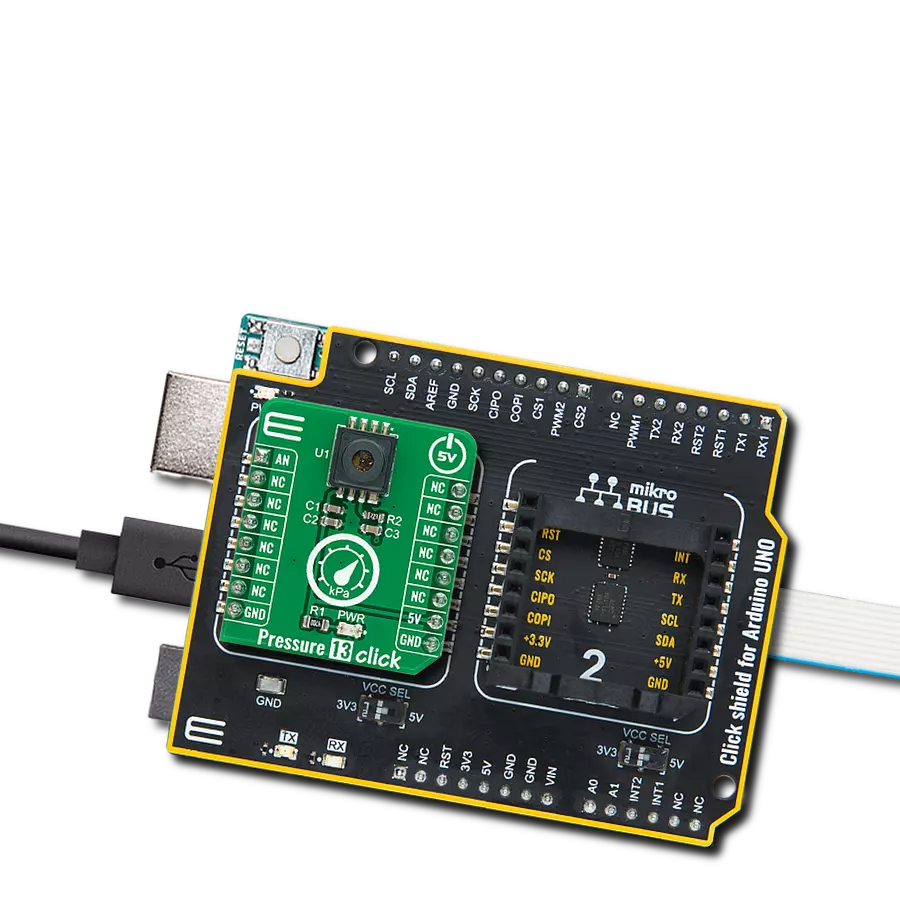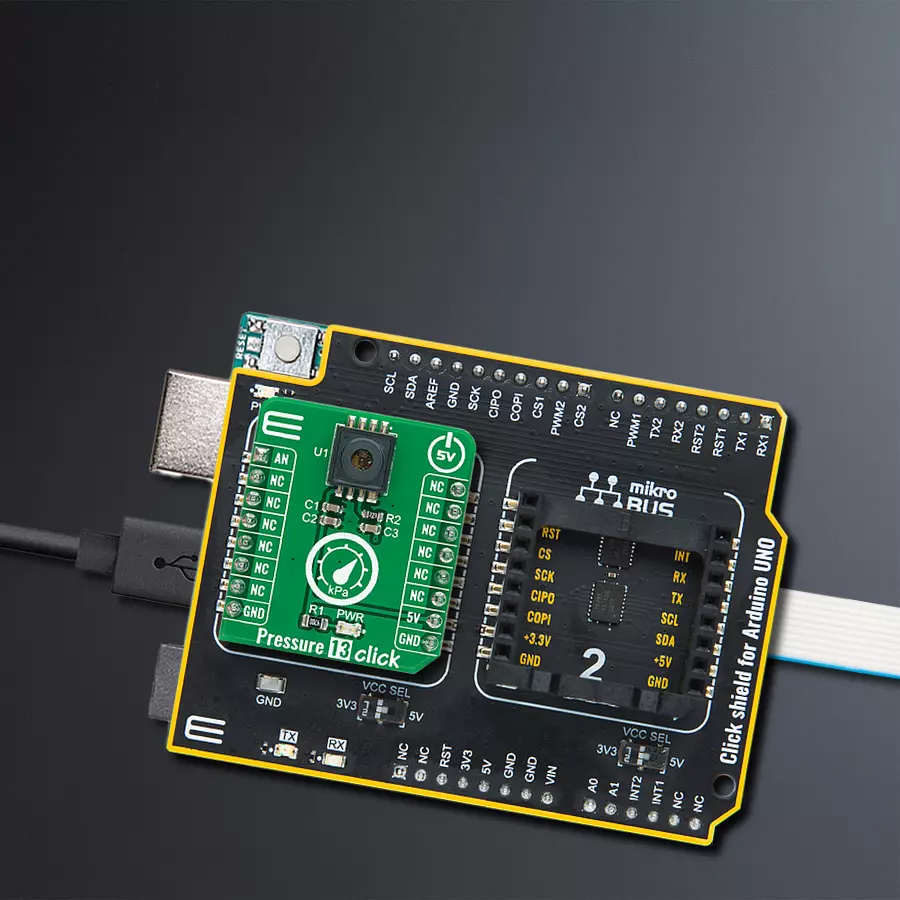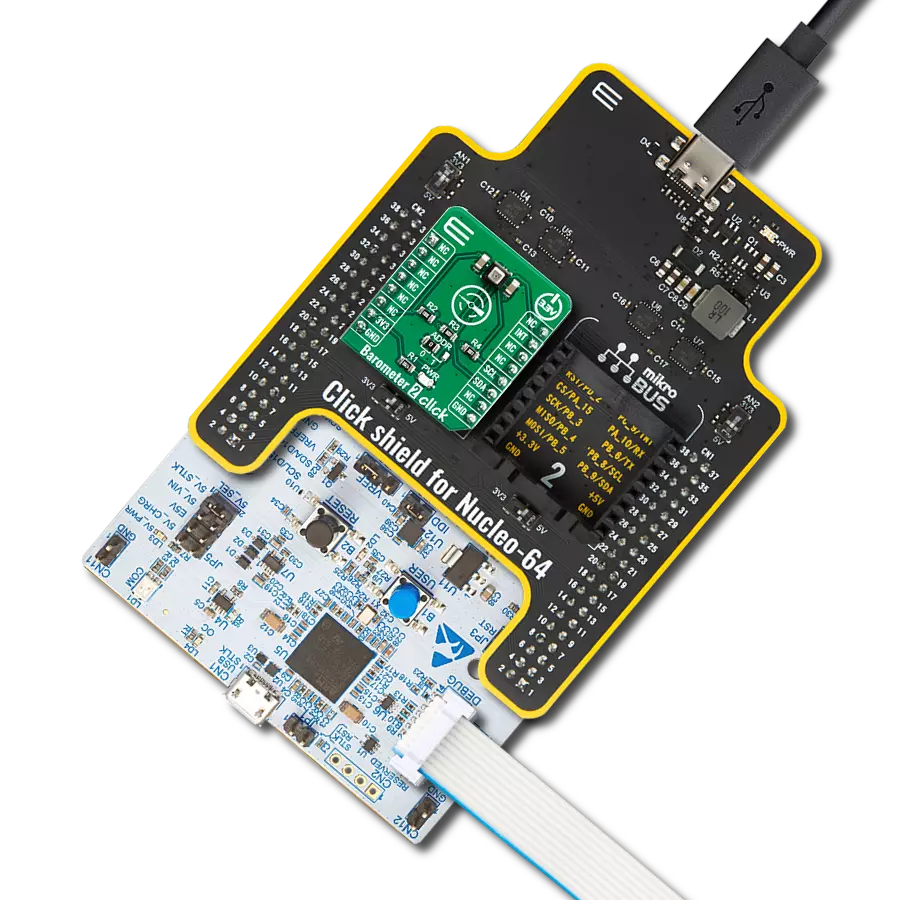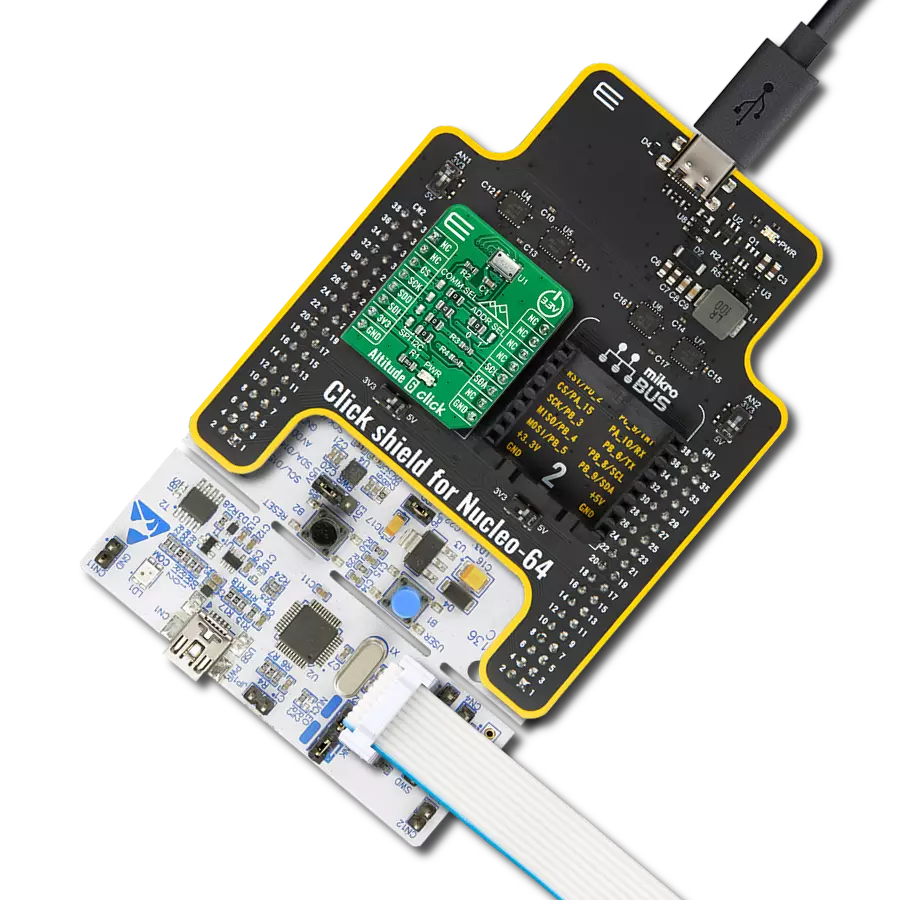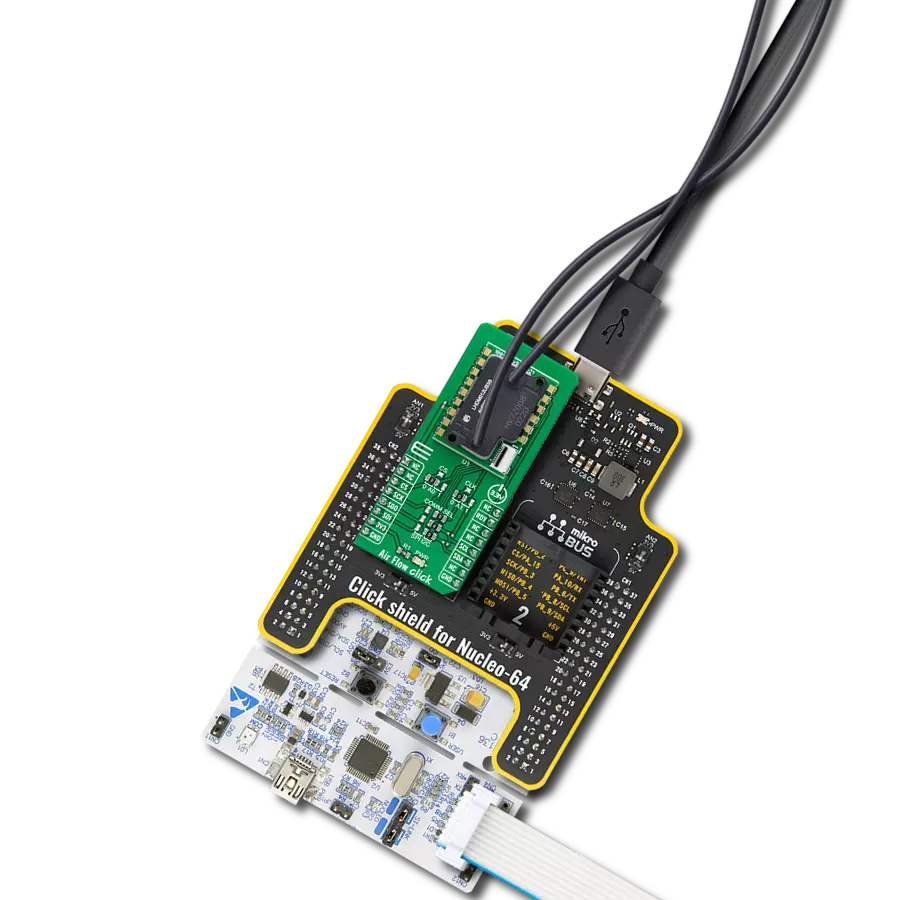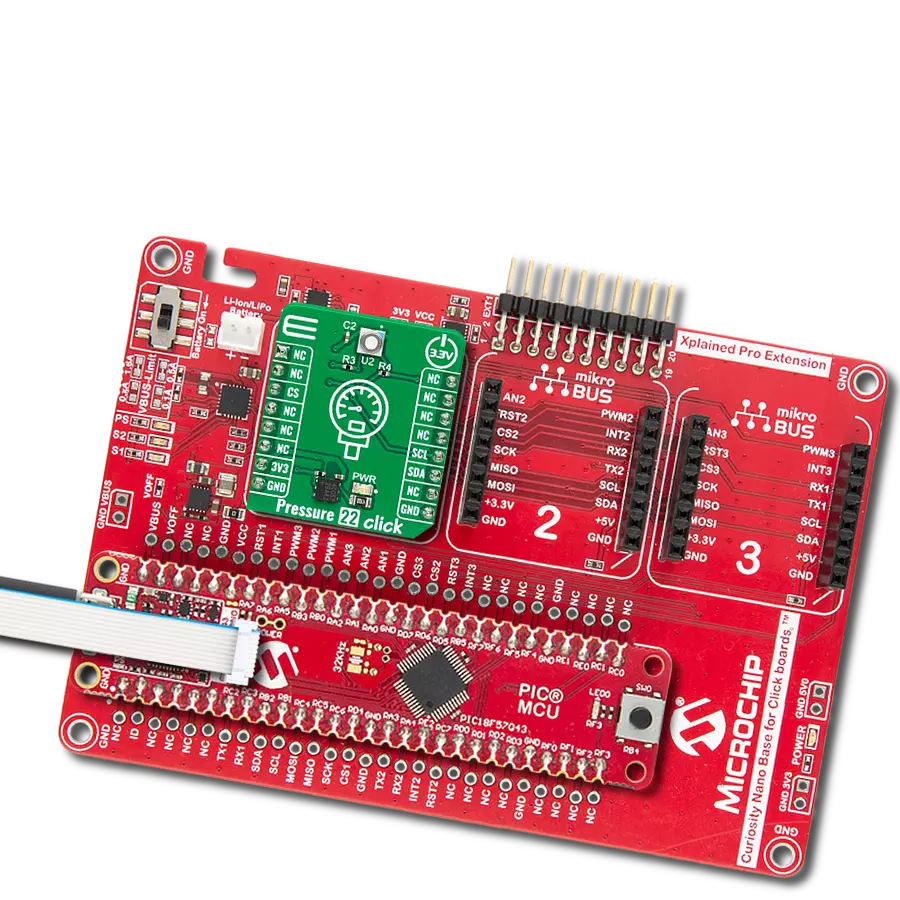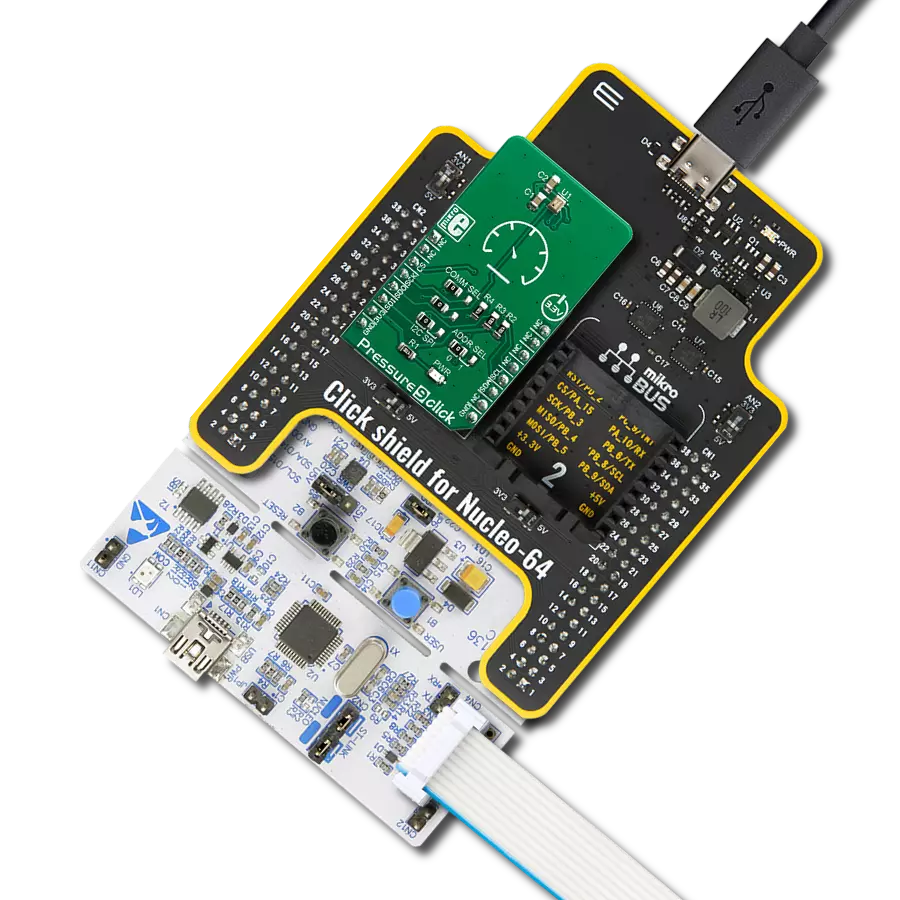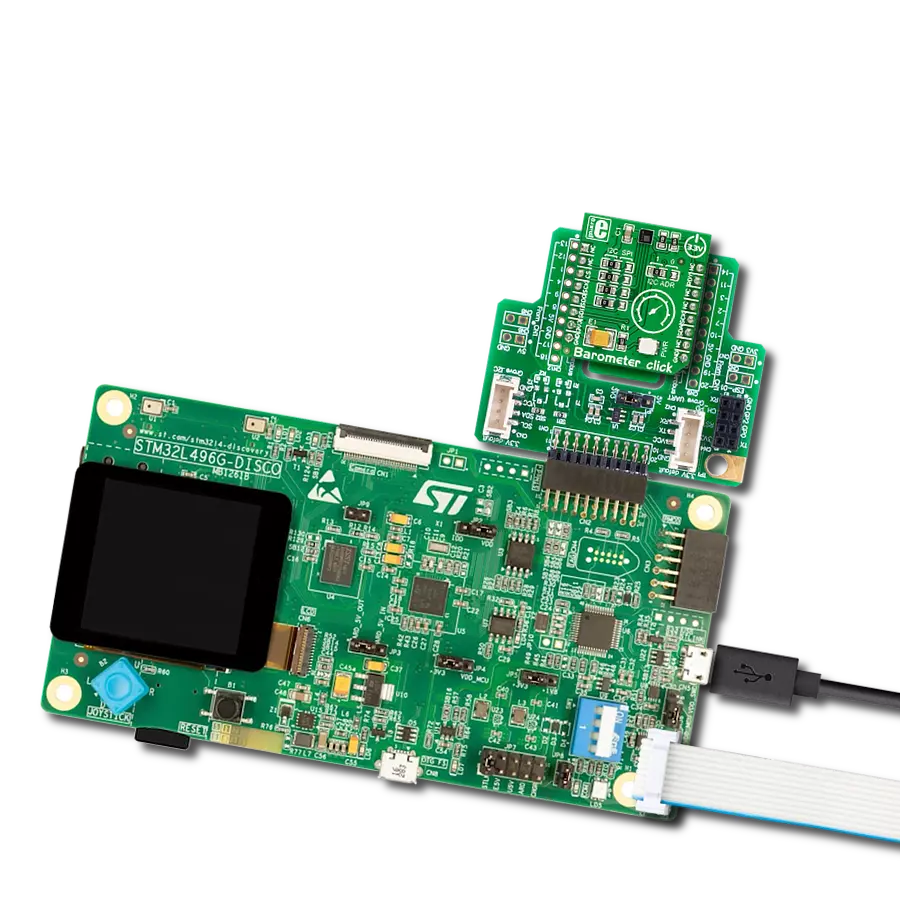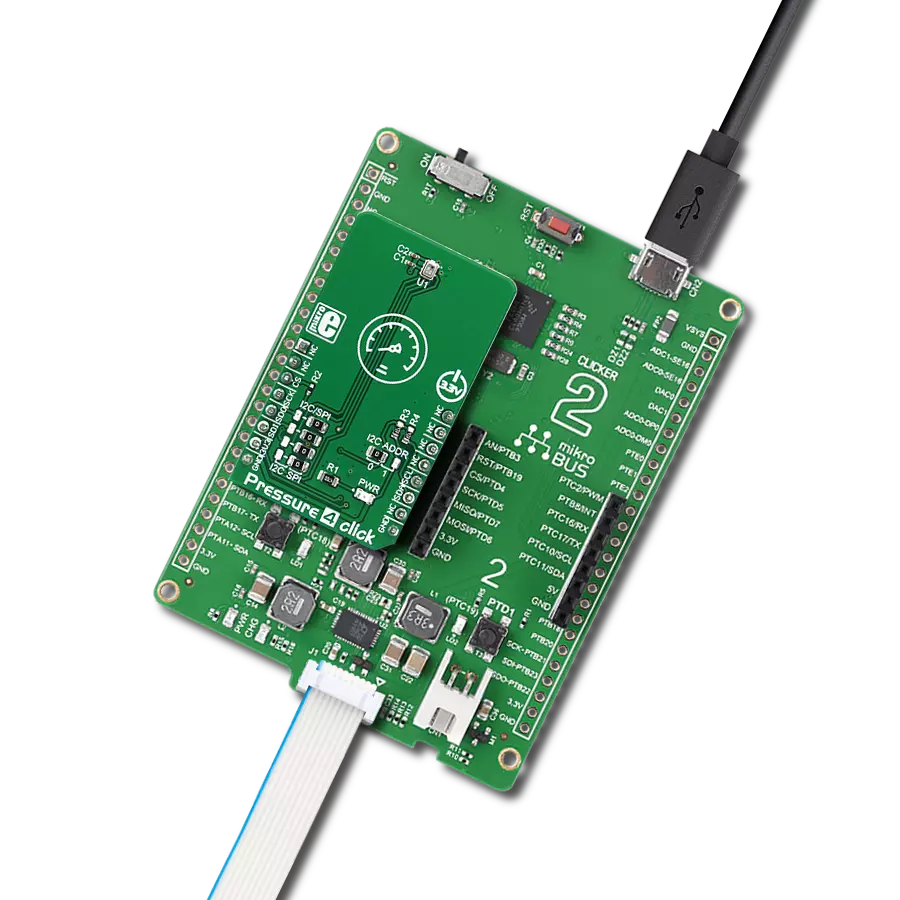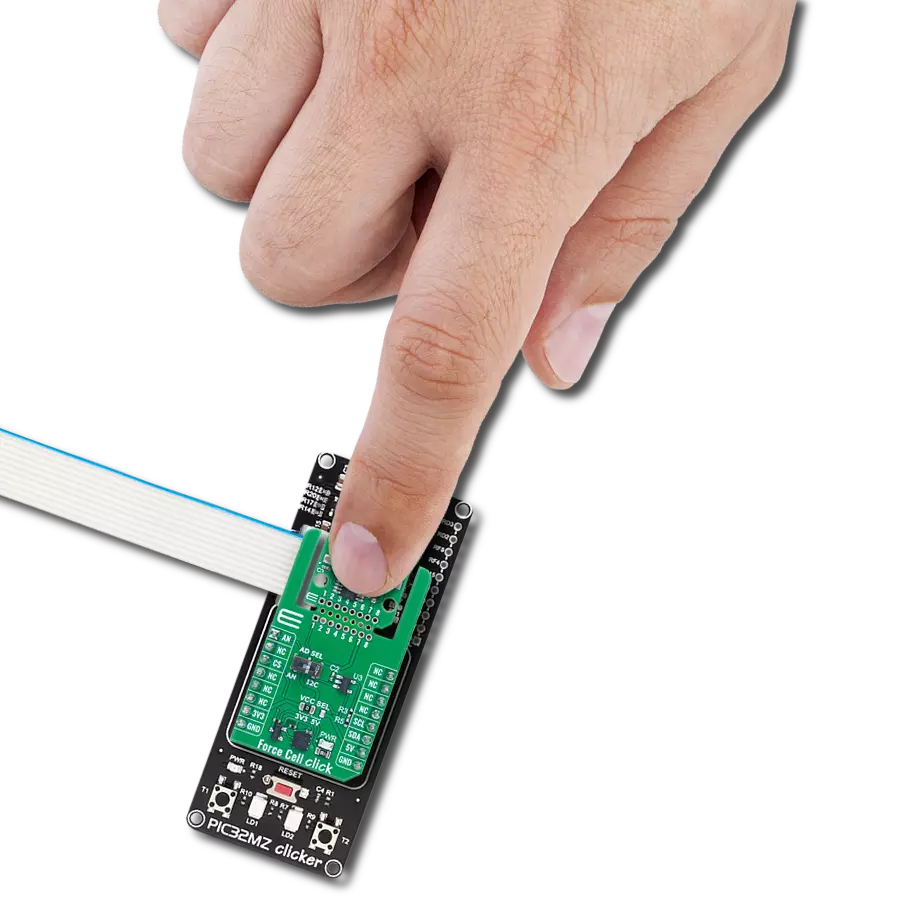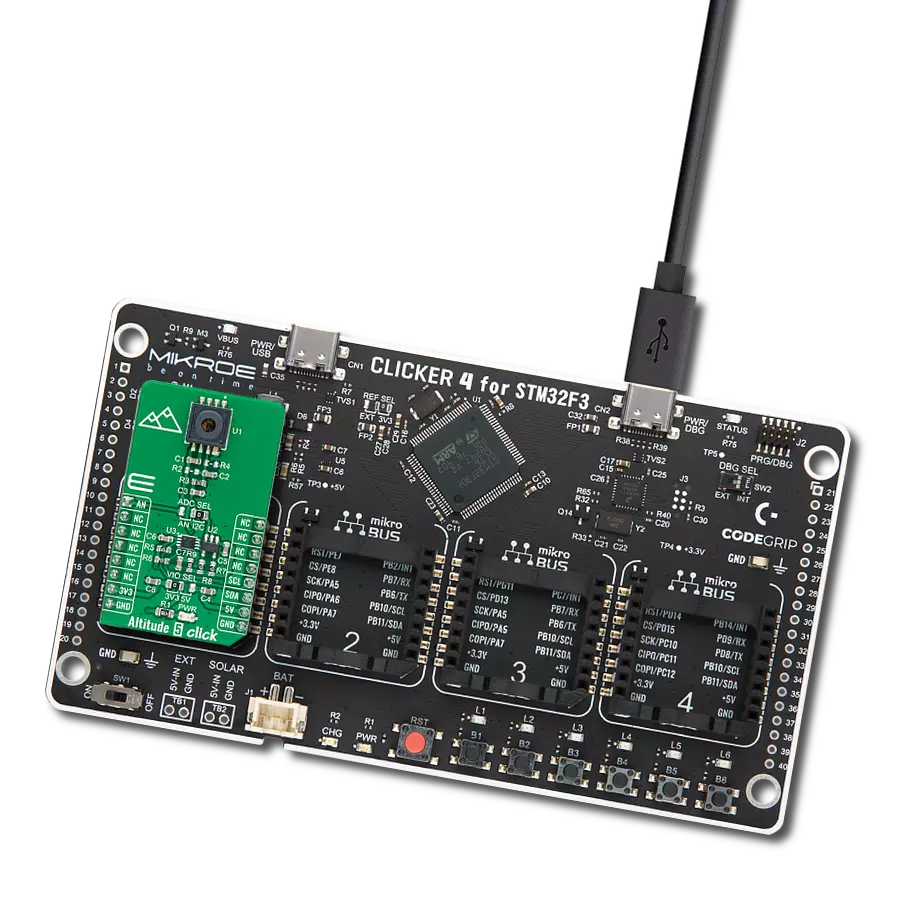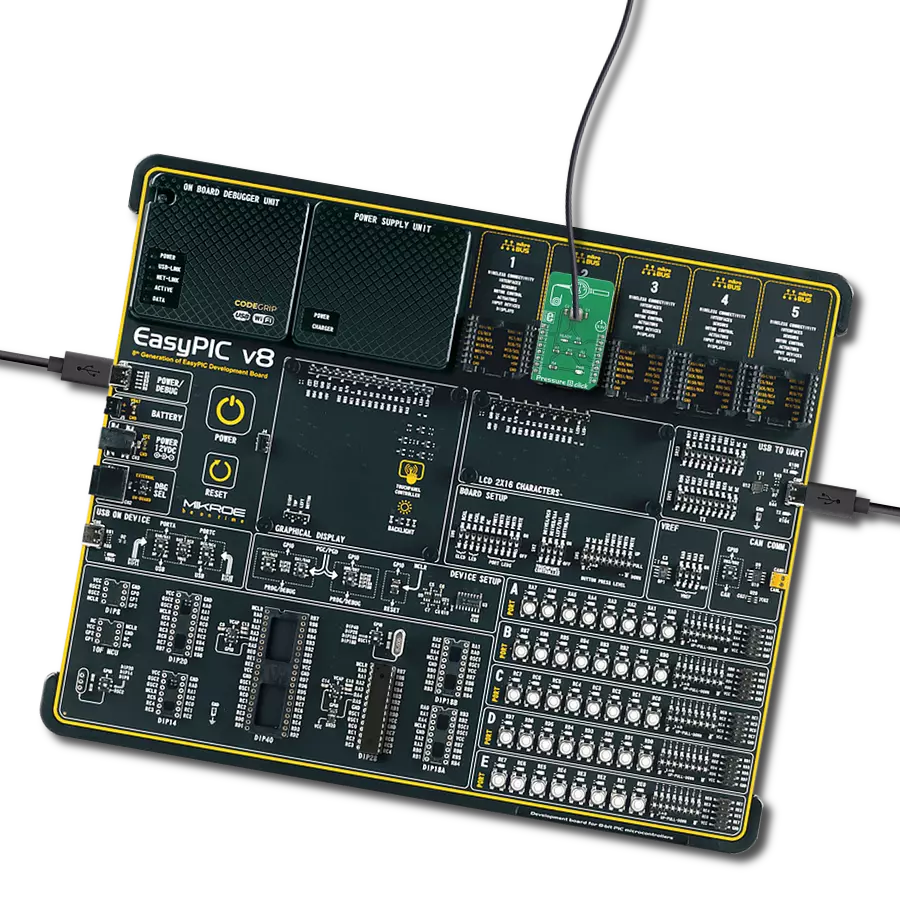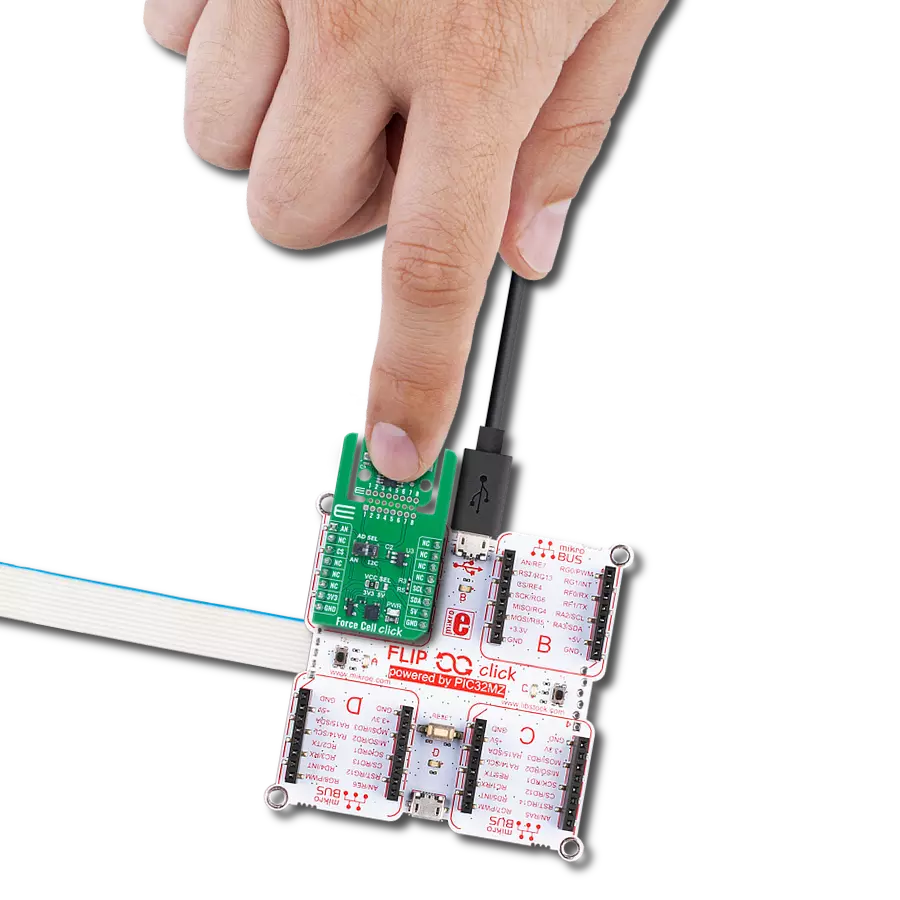Experience the future of pressure measurement with our digital sensor, which empowers you with real-time, high-precision data to streamline your operations and enhance decision-making
A
A
Hardware Overview
How does it work?
Pressure 13 Click is based on the KP229E2701, a miniaturized analog absolute pressure sensor based on a capacitive principle from Infineon. The pressure is detected by an array of capacitive surface micromachined sensor cells (a monolithic integrated signal conditioning circuit implemented in BiCMOS technology). The sensor cell output is amplified, temperature compensated, and linearized to obtain an output voltage proportional to the applied pressure. The manifold air pressure (MAP) is a principal parameter to compute the air-fuel ratio provided to the engine for lower emission due to better combustion and increased efficiency. For cost-sensitive engine systems, a MAP sensor shows the potential to complement or even substitute mass airflow (MAF) sensors. The accuracy of the KP229E2701 sensor is influenced by the supply
voltage (ratiometric error) and pressure, temperature, and aging effects. All parameters needed for the complete calibration algorithm - such as offset, gain, temperature coefficients of offset and gain, and linearization parameters - are determined after the assembly. These parameters are stored in an integrated E²PROM protected with forwarding error correction (a one-bit error is detected and corrected, more than one-bit errors are detected, and the output signal is switched to ground potential). In automotive applications where high production volumes are custom, there is substantial interest in precision, low-cost, and fully integrated sensors. That’s why the manifold pressure data can be used to compute diagnostics of leakages and malfunctions of the exhaust gas recirculation valve. Pressure 13 Click communicates with MCU using only one GPIO
pin routed on the AN pin of the mikroBUS™ socket. The KP229E2701 sensor possesses several digital pins used only during calibration and testing. That’s why it’s recommended and done to leave these pins floating. The output circuit acts as a low-pass decoupling filter between the sensor output and the A/D input of the MCU because it’s recommended to protect the pressure sensor against overload and electromagnetic interferences. This Click board™ can be operated only with a 5V logic voltage level. The board must perform appropriate logic voltage level conversion before using MCUs with different logic levels. Also, it comes equipped with a library containing functions and an example code that can be used as a reference for further development.
Features overview
Development board
Arduino UNO is a versatile microcontroller board built around the ATmega328P chip. It offers extensive connectivity options for various projects, featuring 14 digital input/output pins, six of which are PWM-capable, along with six analog inputs. Its core components include a 16MHz ceramic resonator, a USB connection, a power jack, an
ICSP header, and a reset button, providing everything necessary to power and program the board. The Uno is ready to go, whether connected to a computer via USB or powered by an AC-to-DC adapter or battery. As the first USB Arduino board, it serves as the benchmark for the Arduino platform, with "Uno" symbolizing its status as the
first in a series. This name choice, meaning "one" in Italian, commemorates the launch of Arduino Software (IDE) 1.0. Initially introduced alongside version 1.0 of the Arduino Software (IDE), the Uno has since become the foundational model for subsequent Arduino releases, embodying the platform's evolution.
Microcontroller Overview
MCU Card / MCU
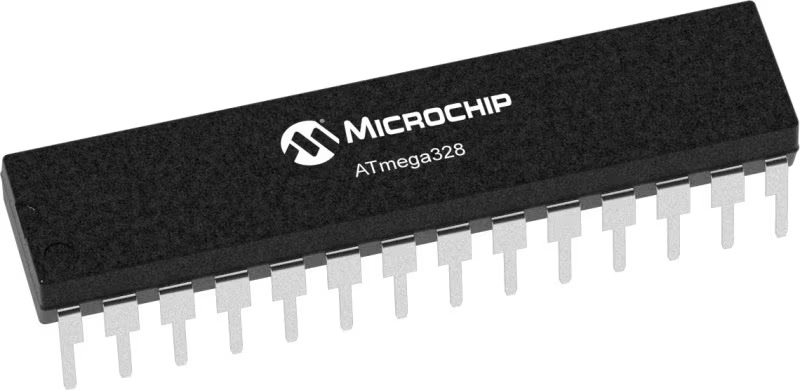
Architecture
AVR
MCU Memory (KB)
32
Silicon Vendor
Microchip
Pin count
32
RAM (Bytes)
2048
You complete me!
Accessories
Click Shield for Arduino UNO has two proprietary mikroBUS™ sockets, allowing all the Click board™ devices to be interfaced with the Arduino UNO board without effort. The Arduino Uno, a microcontroller board based on the ATmega328P, provides an affordable and flexible way for users to try out new concepts and build prototypes with the ATmega328P microcontroller from various combinations of performance, power consumption, and features. The Arduino Uno has 14 digital input/output pins (of which six can be used as PWM outputs), six analog inputs, a 16 MHz ceramic resonator (CSTCE16M0V53-R0), a USB connection, a power jack, an ICSP header, and reset button. Most of the ATmega328P microcontroller pins are brought to the IO pins on the left and right edge of the board, which are then connected to two existing mikroBUS™ sockets. This Click Shield also has several switches that perform functions such as selecting the logic levels of analog signals on mikroBUS™ sockets and selecting logic voltage levels of the mikroBUS™ sockets themselves. Besides, the user is offered the possibility of using any Click board™ with the help of existing bidirectional level-shifting voltage translators, regardless of whether the Click board™ operates at a 3.3V or 5V logic voltage level. Once you connect the Arduino UNO board with our Click Shield for Arduino UNO, you can access hundreds of Click boards™, working with 3.3V or 5V logic voltage levels.
Used MCU Pins
mikroBUS™ mapper
Take a closer look
Click board™ Schematic

Step by step
Project assembly
Software Support
Library Description
This library contains API for Pressure 13 Click driver.
Key functions:
pressure13_read_an_pin_value- Pressure 13 read AN pin value functionpressure13_read_an_pin_voltage- Pressure 13 read AN pin voltage level functionpressure13_get_pressure- Pressure 13 read AN pin voltage level function
Open Source
Code example
The complete application code and a ready-to-use project are available through the NECTO Studio Package Manager for direct installation in the NECTO Studio. The application code can also be found on the MIKROE GitHub account.
/*!
* @file main.c
* @brief Pressure 13 Click Example.
*
* # Description
* This is an example which demonstrates the use of Pressure 13 Click board.
*
* The demo application is composed of two sections :
*
* ## Application Init
* Initialization driver enables - GPIO, initializes ADC, also write log.
*
* ## Application Task
* Measure and display pressure ( mBar ). Results are being sent to the
* Usart Terminal where you can track their changes.
* All data logs on usb uart approximately every sec.
*
*
* @author Stefan Ilic
*
*/
#include "board.h"
#include "log.h"
#include "pressure13.h"
static pressure13_t pressure13; /**< Pressure 13 Click driver object. */
static log_t logger; /**< Logger object. */
static uint16_t adc_val;
static float pressure_val;
static float voltage_val;
void application_init ( void ) {
log_cfg_t log_cfg; /**< Logger config object. */
pressure13_cfg_t pressure13_cfg; /**< Click config object. */
/**
* Logger initialization.
* Default baud rate: 115200
* Default log level: LOG_LEVEL_DEBUG
* @note If USB_UART_RX and USB_UART_TX
* are defined as HAL_PIN_NC, you will
* need to define them manually for log to work.
* See @b LOG_MAP_USB_UART macro definition for detailed explanation.
*/
LOG_MAP_USB_UART( log_cfg );
log_init( &logger, &log_cfg );
log_info( &logger, " Application Init " );
// Click initialization.
pressure13_cfg_setup( &pressure13_cfg );
PRESSURE13_MAP_MIKROBUS( pressure13_cfg, MIKROBUS_1 );
if ( ADC_ERROR == pressure13_init( &pressure13, &pressure13_cfg ) )
{
log_error( &logger, " Application Init Error. " );
log_info( &logger, " Please, run program again... " );
for ( ; ; );
}
log_info( &logger, " Application Task " );
log_printf( &logger, "-------------------------\r\n", voltage_val );
}
void application_task ( void ) {
if ( pressure13_get_pressure( &pressure13, &pressure_val ) != ADC_ERROR ) {
log_printf( &logger, " Pressure: %.3f [mBar]\r\n", pressure_val );
}
log_printf( &logger, "-------------------------\r\n" );
Delay_ms ( 1000 );
}
int main ( void )
{
/* Do not remove this line or clock might not be set correctly. */
#ifdef PREINIT_SUPPORTED
preinit();
#endif
application_init( );
for ( ; ; )
{
application_task( );
}
return 0;
}
// ------------------------------------------------------------------------ END
Additional Support
Resources
Category:Pressure
